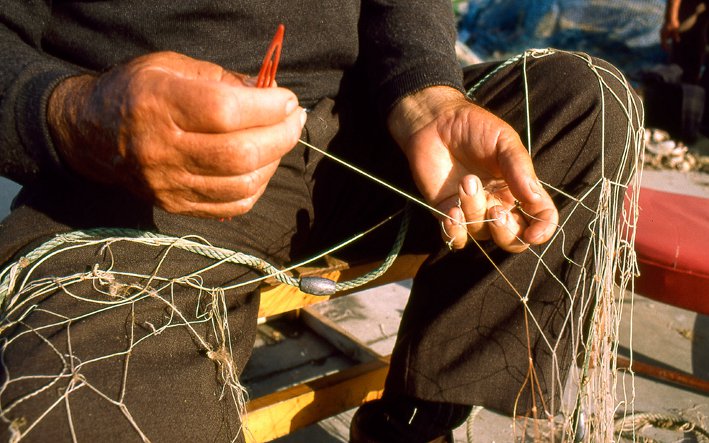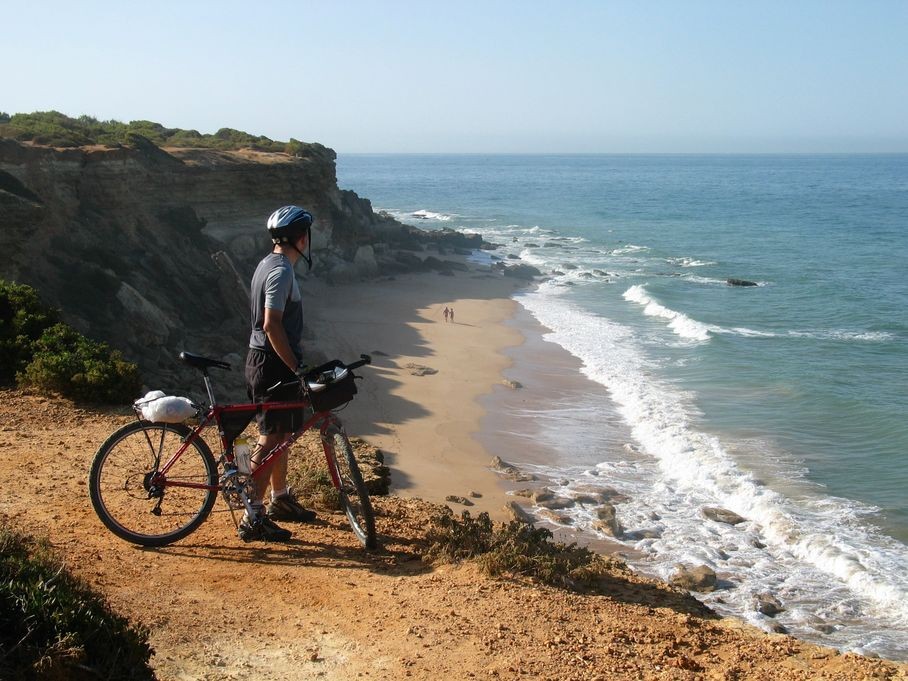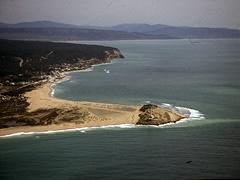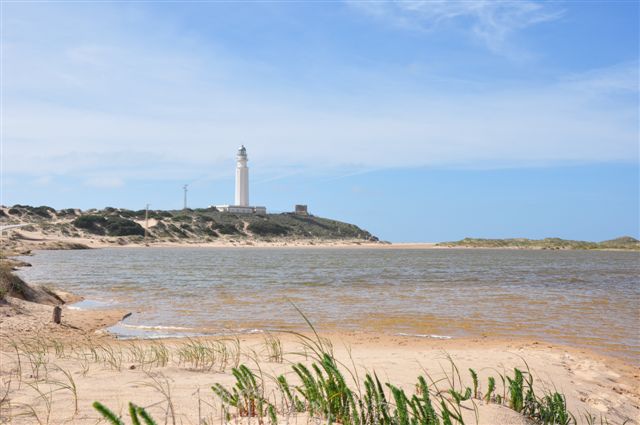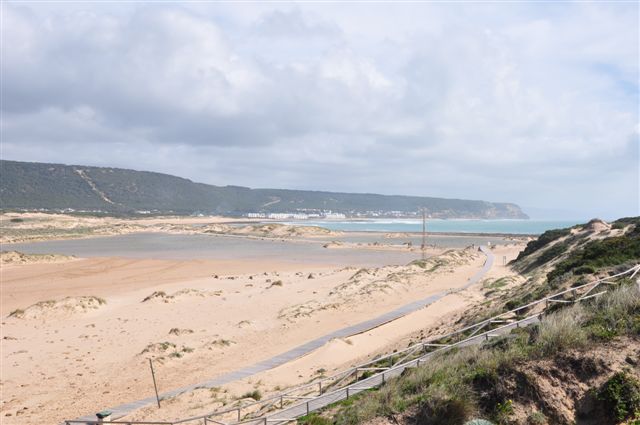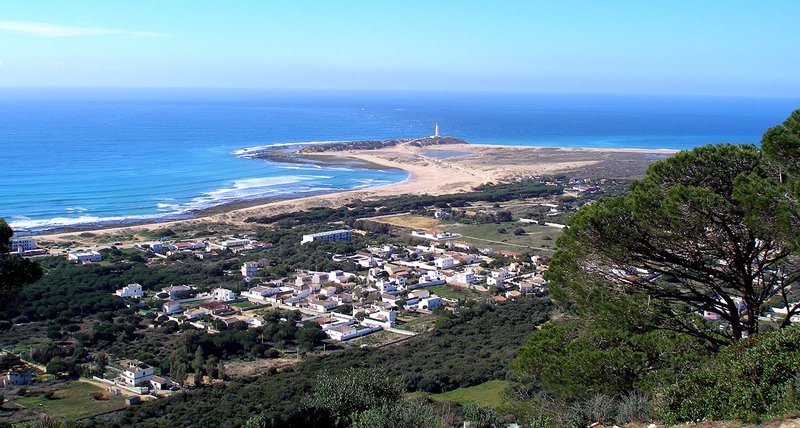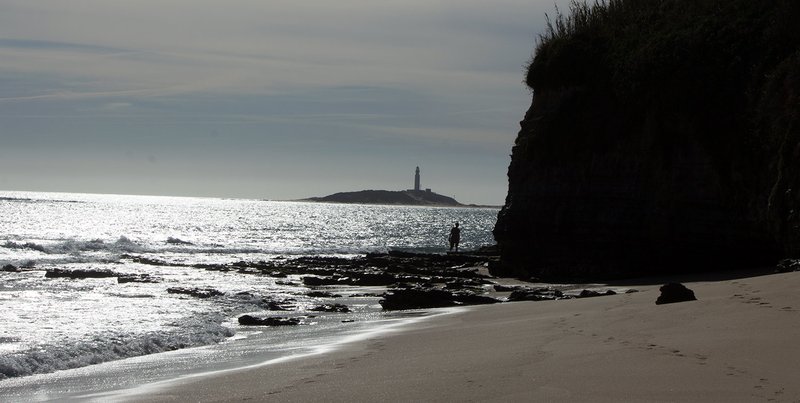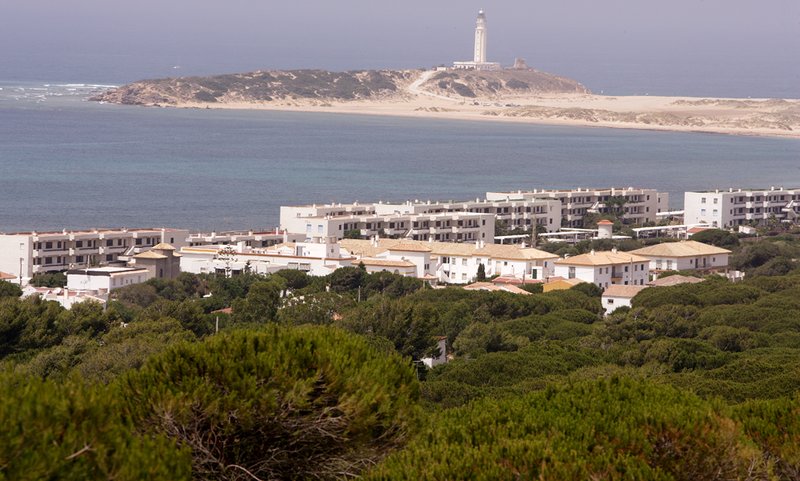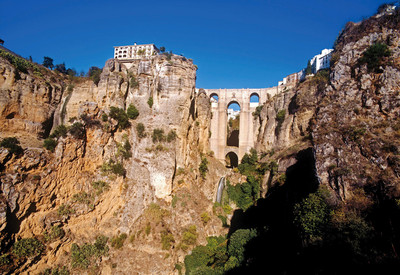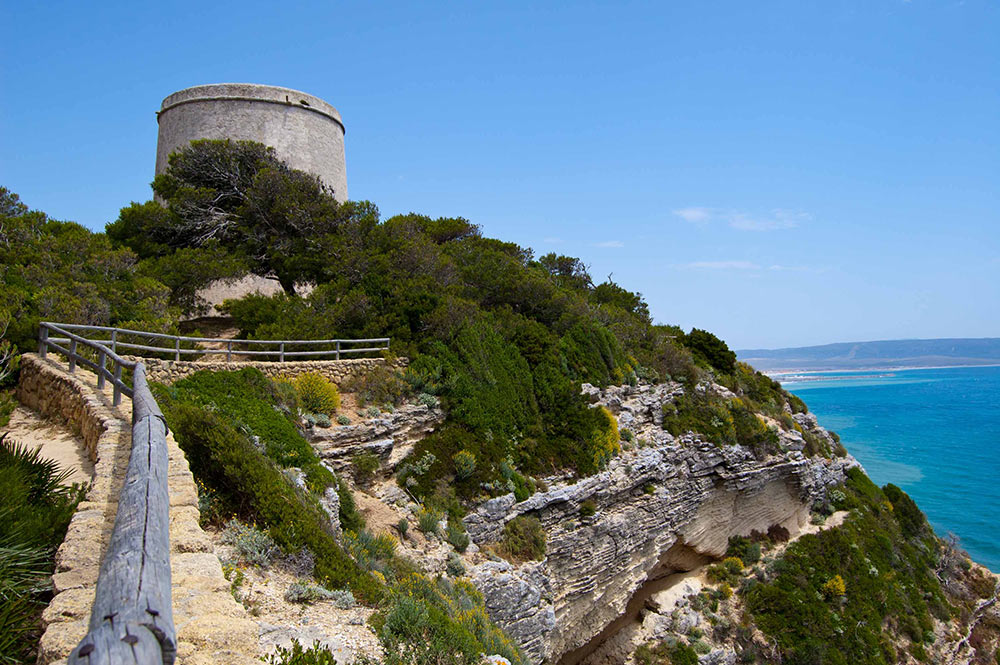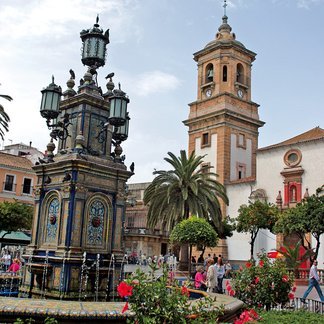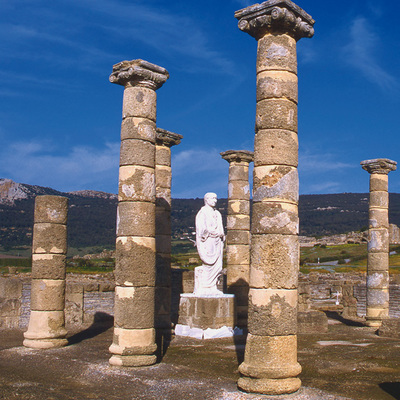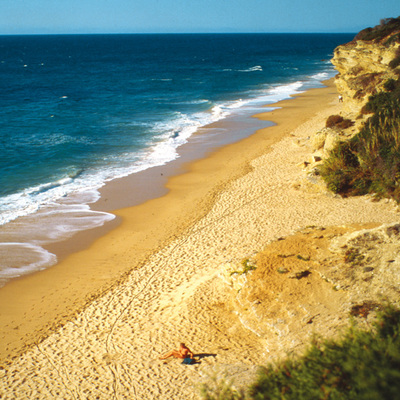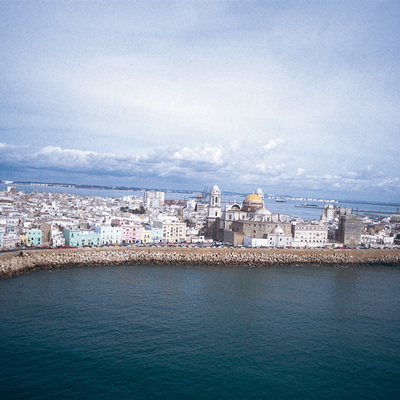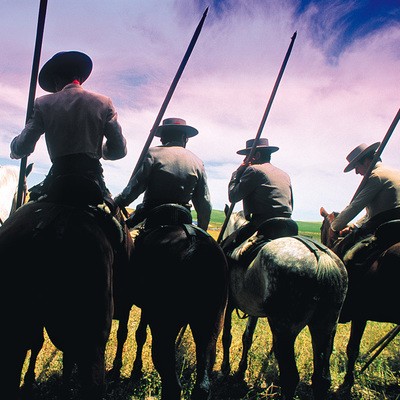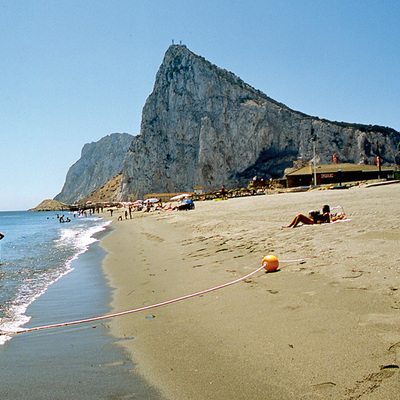Tómbolo de Trafalgar
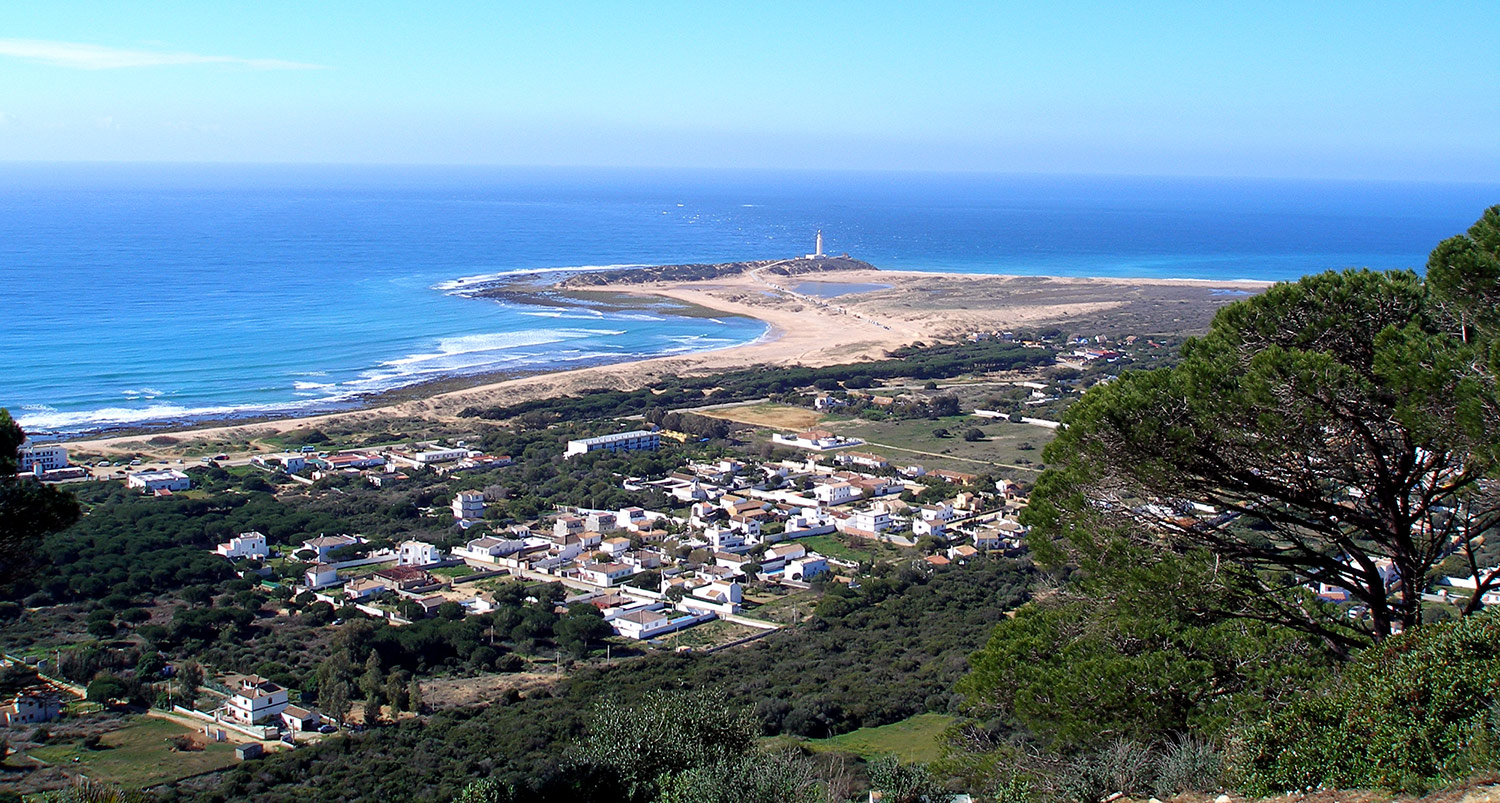
This Natural Monument is in the area of the Cabo de Trafalgar Lighthouse and Breña y Marismas del Barbate, close to Caños de Meca. Its beautiful landscape combines fine sand dunes, broad beaches and a rocky area where the lighthouse stands.
The sand brought by the tides created a causeway that links the islet with the mainland, surrounded by a rain-filled depression. When the sea withdrew, the wind caused dunes to form on the beaches of the south of the islet, contributing to its fossilisation. On the old coast, the easterly wind caused another system of dunes to form, now covered with juniper trees and mastic.
Sea stock flowers, sea daffodils and sea holly form a colourful layer over the sand. This covering of Marram grass and Poaceae grass hold the soil together and provide shelter for the sea spurge. In areas where the soil is stable, you can see common madder and Crucianella maritima, mugwort and pink.
In the flooded area there are reeds, making this a habitual ground for birds like the Audouin's gull, the wood sandpiper, sandwich tern, Caspian tern and the bar-tailed godwit, as well as the egret. The beaches are home to purple, shore crabs and the colourful orange starfish.
However, the most characteristic thing about this place is its history. Around the lighthouse there are archaeological sites such as a Roman temple to the god Juno with sacrificial altar and a fish-salting factory. There is part of an 11th-century watchtower from the Hispano-Moorish settlement, dismantled in the 19th century to build today's lighthouse. Nevertheless, the event that really made it famous was the Battle of Trafalgar, in 1805, which saw the tragic deaths of 5,000 soldiers, the sinking of innumerable boats and the loss of Spanish naval hegemony against the British navy.

